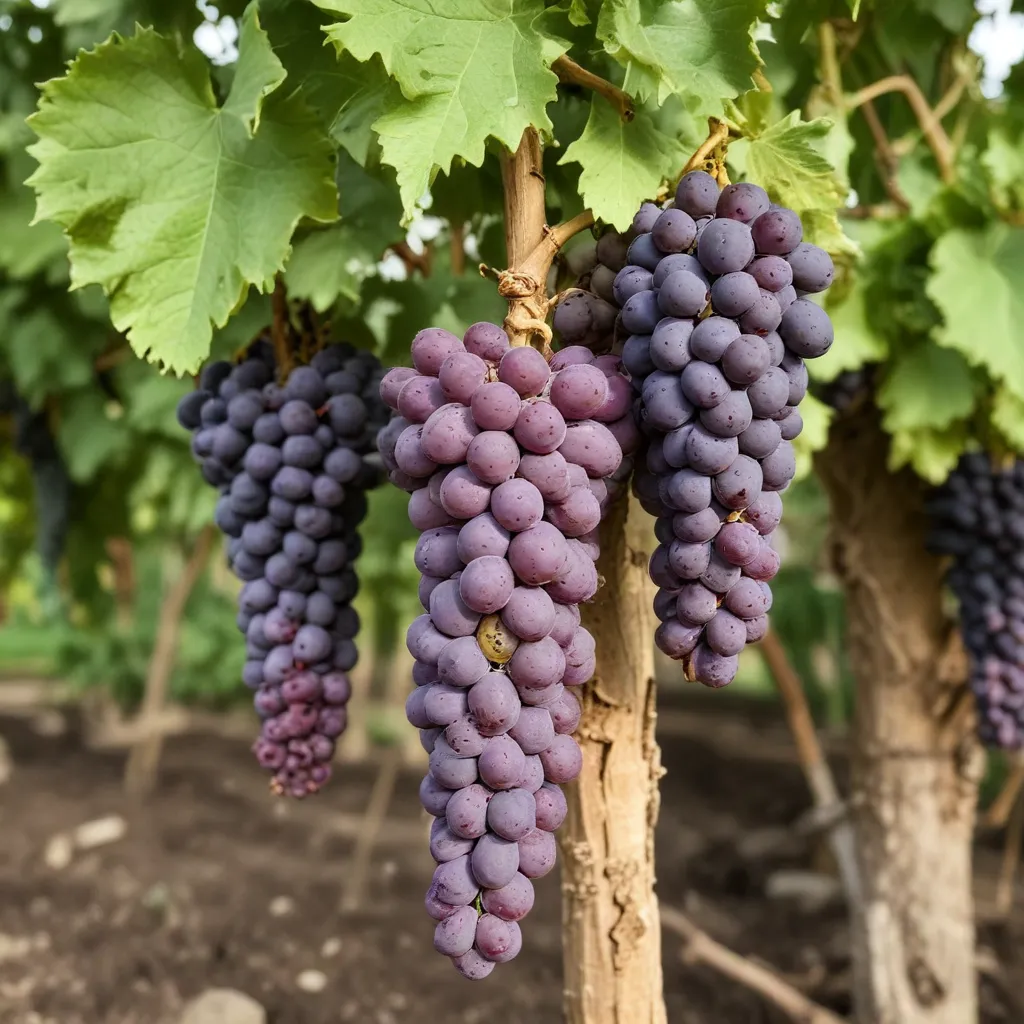
At Wine Garden Inn, we take great pride in our estate-grown grape varietals and the delectable wines they produce. As hospitality and wine experts, we understand that crafting exceptional vintages begins with the foundational elements of viticulture – the soil and climate conditions that nourish our vines. In this comprehensive guide, we’ll explore the key factors to consider when cultivating the perfect environment for thriving grapevines.
Soil Requirements
Soil Composition
The composition of your vineyard’s soil is paramount to the health and productivity of your grapevines. Ideally, you want a loam soil – a blend of sand, silt, and clay that retains moisture well while maintaining excellent drainage. Loam soils are typically darker in color and have a crumbly, well-aerated texture, providing the optimal foundation for grape cultivation.
Soil pH
In addition to the right soil composition, the soil pH must be carefully managed for grapevines to thrive. The ideal pH range for vineyards is between 5.5 and 6.5, which allows for proper nutrient absorption and balanced acidity. If your soil is too acidic (below 5.5 pH), you may need to incorporate lime to raise the pH. Conversely, if the pH is too alkaline (above 6.5), sulfur can be used to lower it.
Drainage
Proper drainage is essential, as grapevines abhor waterlogged conditions. Sandy or gravelly soils with a slight slope are ideal, allowing excess moisture to drain away efficiently. Poorly drained soils can lead to root rot, decreased nutrient uptake, and even vine dieback. Consider installing drainage tiles or strategically grading your vineyard site to ensure optimal soil drainage.
Climate Considerations
Temperature Range
Grapevines thrive in moderate climates, preferring average growing season temperatures between 60°F and 80°F. Sudden temperature fluctuations or extreme heat or cold can stress the vines, impacting fruit quality and yield. When selecting a vineyard site, research the local microclimate to ensure it aligns with the temperature requirements of your chosen grape varietals.
Precipitation Patterns
Consistent, moderate precipitation during the growing season is ideal for grapevines. Too much rainfall can lead to fungal diseases, while drought conditions can stunt vine growth and reduce berry development. Aim for an annual rainfall range of 20-40 inches, with the majority of precipitation occurring during the spring and early summer months. Supplemental irrigation may be necessary in drier climates.
Sunlight Exposure
Grapevines require ample sunlight exposure, with a minimum of six hours of direct sunlight per day. Optimal sunlight conditions can vary depending on the grape variety, but generally, a south- or southwest-facing vineyard site that receives full sun throughout the day is preferred. Proper canopy management, such as pruning and shoot positioning, can also help maximize sunlight exposure for your vines.
Planting and Establishment
Site Selection
When choosing a vineyard location, consider the soil composition, drainage, and microclimate factors discussed earlier. Additionally, assess the topography – gentle slopes are preferable to flat or low-lying areas, as they can help mitigate the risk of frost damage and improve air circulation.
Planting Techniques
Proper planting techniques are crucial for the long-term success of your grapevines. Start by preparing the soil with deep ripping or cultivation to loosen compacted layers. Plant the vines at the recommended depth and spacing, ensuring the rootstock is properly positioned. Staking or trellising the young vines will provide crucial support as they become established.
Vine Training
As the vines grow, you’ll need to implement a strategic training system to guide their development. Popular methods include the Guyot, Cordon, and Vertical Shoot Positioning (VSP) systems, each with their own pruning and canopy management requirements. Proper vine training optimizes sunlight exposure, air circulation, and fruit quality.
Vineyard Management
Pruning and Training
Ongoing pruning and vine training are essential maintenance tasks in the vineyard. Proper pruning techniques, such as the cane or spur pruning methods, help control vigor, increase fruit quality, and maintain the desired vine structure. Regular shoot positioning and leaf removal further enhance sunlight penetration and air flow within the canopy.
Irrigation Strategies
While grapevines are relatively drought-tolerant, strategic irrigation can help optimize vine health and fruit development, especially during periods of low rainfall. Drip irrigation systems deliver precise, efficient water application directly to the root zone, minimizing waste and disease risk.
Pest and Disease Control
Vigilant monitoring and proactive management of pests and diseases are crucial in the vineyard. Common grape ailments include powdery mildew, downy mildew, and various fungal rots. Integrated Pest Management (IPM) approaches, incorporating cultural, biological, and judicious use of organic or low-impact fungicides, can help maintain a healthy, sustainable vineyard.
Grape Varieties
Common Grape Cultivars
At Wine Garden Inn, we showcase a diverse array of grape varietals, each with its own unique terroir and flavor profile. Some of our most popular estate-grown wines include Chardonnay, Pinot Noir, Cabernet Sauvignon, and Riesling – all of which thrive in the optimal soil and climate conditions of our vineyard.
Cold-Hardy Grape Types
For vineyards in cooler climates, investing in cold-hardy grape varieties can be a game-changer. Grapes like Marquette, Frontenac, and La Crescent are bred to withstand harsh winters while still producing high-quality fruit. These resilient cultivars can expand the geographic range of successful grape cultivation.
Disease-Resistant Grape Varieties
Certain grape varietals have been selectively bred for enhanced disease resistance, reducing the need for intensive fungicide applications. Cultivars like Noiret, Arandell, and Aromella exhibit superior tolerance to common fungal diseases, allowing for more sustainable vineyard management practices.
At Wine Garden Inn, we are committed to crafting world-class wines that showcase the distinctive terroir of our estate. By meticulously managing the soil and climate conditions in our vineyard, we ensure that our grapevines thrive, producing exceptional fruit that is the foundation for our delectable culinary offerings and award-winning vintages. We invite you to visit our winery to experience the culmination of our viticultural journey firsthand.
